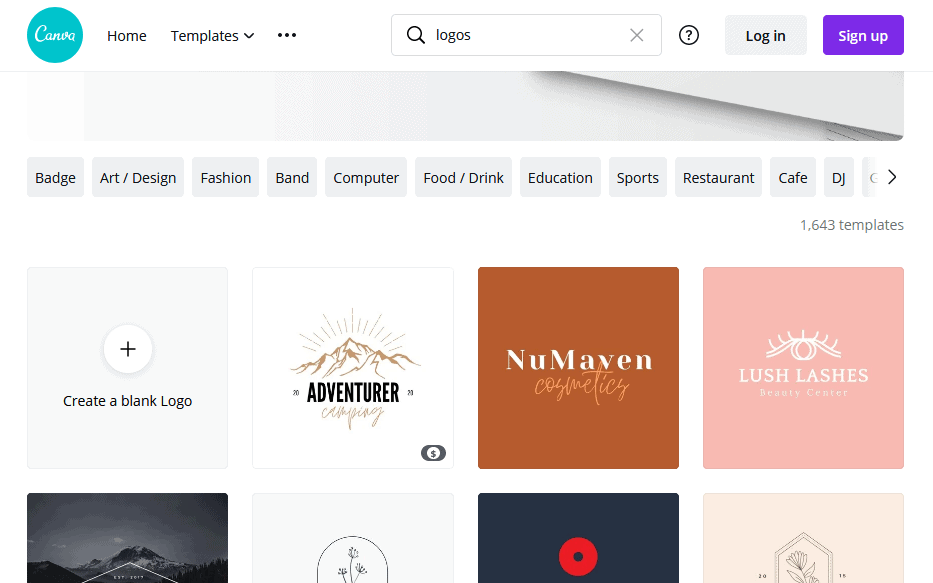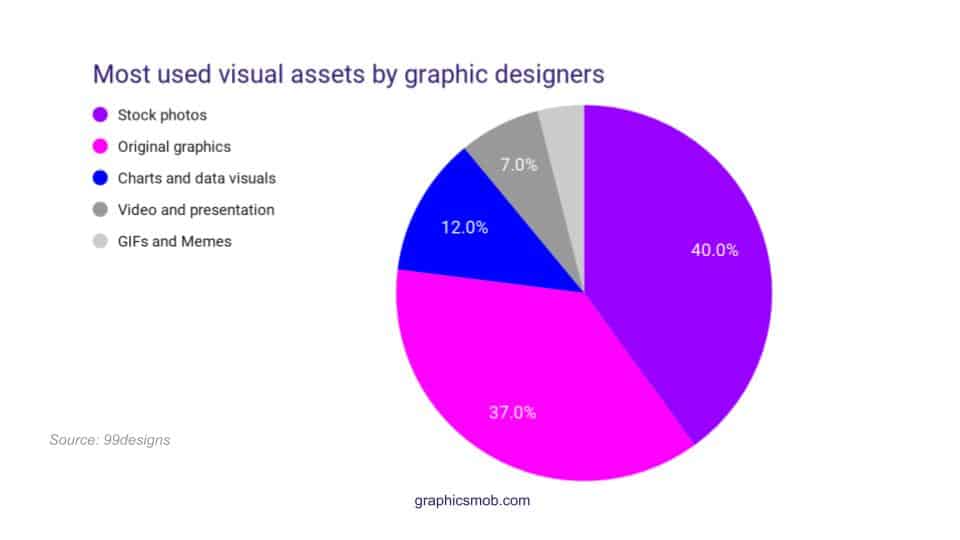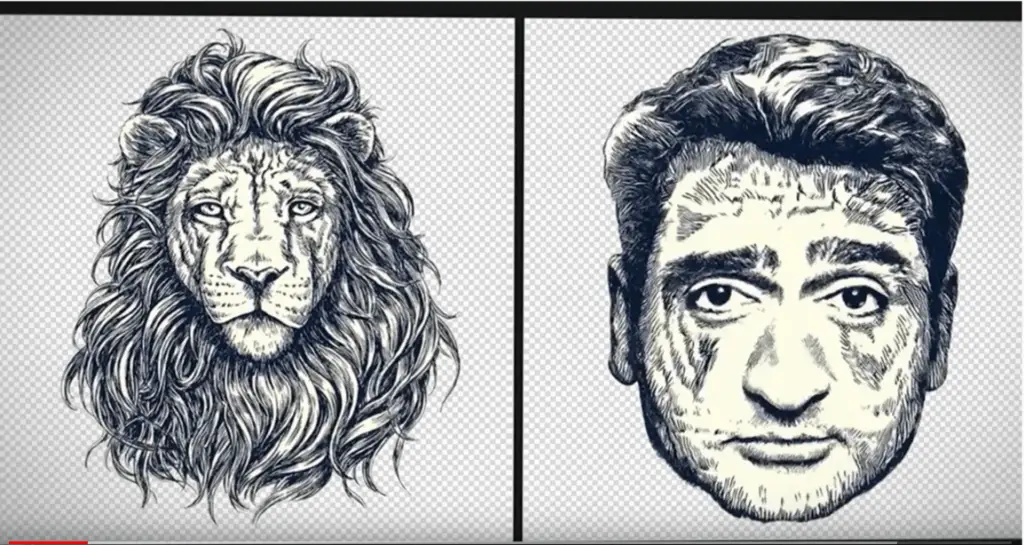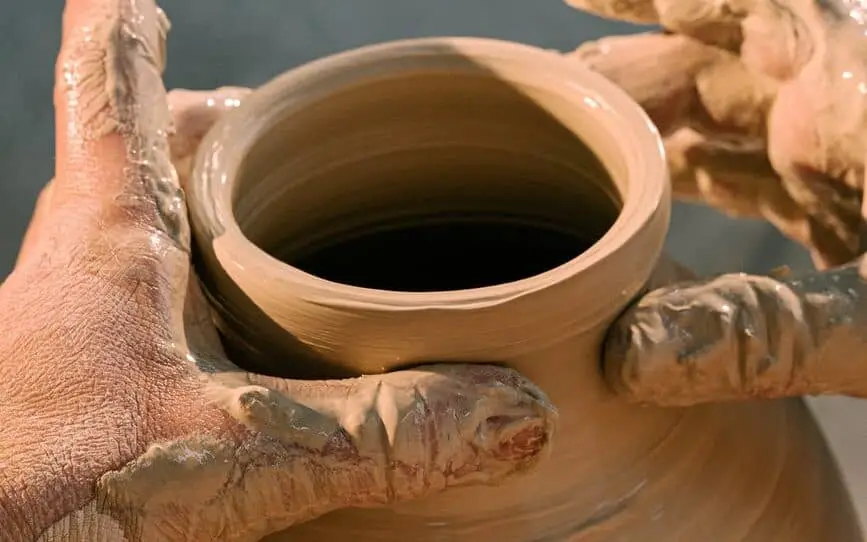No, graphic design is not dying. However it is changing at a rapid pace and though the industry is set to grow as it recovers from the pandemic, it is estimated to shrink by 4% by 2029. Graphic designers are concerned about DIY design programs like Canva or WIx and the decline in demand for print and publishing design. But as digital advertising increases and diversifies there are new opportunities for the smart graphic designer. Read on to find out how to survive in an ever-changing design world.
What is killing graphic design (as we know it)
I repeat, graphic design is not dying. But the industry is set to decline by 4% between 2019 and 2029 (Bureau of Labour Statistics). So what does this mean? Isn’t that a contradiction? Well, graphic design is an umbrella term that includes so many branches and fields, including traditional graphic design like signage, billboards, newspaper and other print-related design. These contribute largely to the decline, undercutting the projected gains in other fields like UI/UX design.
1. Decline in publishing and print media
As advertising and publishing houses transition from print to 100% online marketing and publishing, there are fewer opportunities for graphic designers who specialized in this work. By 2020, only 12% of graphic designers in the US were working in print and publishing (Bureau of Labor Statistics, 2020).

Online Companies are also less likely to have in-house designers compared to printing companies, and therefore rely more on the services of freelancers. Freelancers contribute up to 90% of industry participation according to IBISWorld. It is not easy for formerly employed designers to transition to freelancing. In permanent employment, income is regular while a freelancer has to consistently scout for clients and gigs that vary in pay and time-frames. Finding clients as a freelancer requires good promotional and communication skills and building a network of clients takes time and patience.
But it’s not all gloom and doom for print designers. Print Book publishing for instance is still a large market and I don’t think it will ever completely vanish. Print designers also have the opportunity to use their skills and experience at higher levels as art directors and consultants. Design principles largely remain the same, and what you know about print design can be used in digital media.
2. Do it yourself (DIY) software like Canva
You’ve probably already heard of Canva and maybe you’ve even used it. Canva is an easy-to-use online program that allows anyone with an internet connection to design their own logo, poster, social media graphics and other visual content. Users don’t have to work with a myriad of tools and complicated features, instead, it uses drag-and-drop functionality to create designs.

It’s easy to see why this could be a threat to graphic designers’ work, especially considering using the program is free and the premium subscription is still more cost-effective than getting a graphic designer. But is it better, and is it stealing our jobs?
Canva vs professional graphic designers
Canva is easy to use but it still isn’t as good at customizing designs to the client’s needs as a graphic designer can. Because Canva uses pre-made templates (made by graphic designers), the end-product is generic and won’t stand out from a crowd of similar designs.
The client/user is also depending on their own intuition and “feel” to drag and drop elements that make up the design. As much as they will like the design in the end (because they made it) they may have gone for aesthetics rather than purpose and function. Professional graphic designers are aware of the principles of form over function, and their main goal is to communicate through design and achieve your marketing goals rather than just make something that looks nice.
| DIY software like Canva | Graphic Designer |
| Fast turnaround time | Takes time, depends on complexity and designer’s work rate |
| Generic designs from pre-made templates | Custom original designs tailored to your brand |
| Designed to user’s preference and “feel” | Designed with client’s target audience in mind |
| Trendy designs | Innovative, creative and intuitive design |
| Cheaper | Costs more on average |
It takes a lot of learning and practice to learn to design with the consumer in mind rather than the client. Canva is still a long way from achieving creativity and originality. I’ll boldly admit that you may not be able to tell on face value which is a better bakery logo between one made on Canva and one made by the average graphic designer. But take into context the specific bakery, it’s owner, the business’ spirit and sentiment, the demographics of it’s customers, it’s geographical location, it’s goals, and truly, this is where the graphic designer excels.
The graphic designer doesn’t just create a logo, they build a brand. And in the end the professionally designed logo will be more identifiable and will go further in helping the business achieve it’s goals.
So is Canva stealing graphic design jobs? I don’t think it is. The kind of work people go to Canva for is a quick logo for a cash-strapped (very small) new business or someone needs to make a pinterest pin or Instagram post. But this is work that a graphic designer would have done, right? Yes, probably for less than $10, but small to medium sized businesses that need to establish a strong brand and promote their products and services, still see the value in hiring a graphic designer and paying good money. 80% of SMBs (small to medium-sized business) think graphic design is important to their success and original graphics (not including charts and video) account for 37% of the digital assets used according to 99Designs.

85% of SMBs are also willing to pay $500 or more for a logo. In addition to this, the employment of graphic designers in computer-related design will increase by 20% from 2016 t0 2026. (Bureau of Labor Statistics, 2019).
Canva are mostly getting customers that likely wouldn’t get a graphic designer in the first place, or couldn’t afford one. And I agree it saturates the market with cliche generic designs that may harm people’s views on graphic design and reduce its value. But as technology develops and Artificial Intelligence gets better and somehow they are able to develop creative and more intuitive programs, then maybe the graphic designer may become obsolete.
When that time comes, it’s likely that there will be new fields in graphic design that AI may not be able to accomplish, or even better, the value of man-made graphics increases like pottery did, or free-range chicken eggs. Fear not the rise of the machines.
Reasons to be optimistic about the future of graphic design
1. Growth in computer-based design
Digital graphic design is still growing as more businesses transition from print advertising and publishing to digital and online marketing. There’s also an increase in demand for social graphic assets for visual sharing platforms like Instagram and Pinterest. Everyone seems to be selling something, not just established businesses. from organic black soaps to energy crystals. All these people are posting stories, threads, reels, making business pages, etc and all these visuals have to come from somewhere and photography and Canva only take a piece of the pie. The gaming industry also employs many graphic designers. You can read how graphic design is used in video games.

There are Graphic designers making a killing selling social media design services, templates and asset packs. Just search Instagram post design on Fiverr and see all the results. There are still opportunities, even on Tiktok and designing thumbnails and end-cards for youtube videos. Computer-based design offers endless possibilities for graphic designers to specialize in.
Looking for free graphic design software? Check out my list of the 5 Best FREE OFFLINE Graphic Design Software.
2. Emerging fields and trends
A few years back, virtual reality and UI/UX were emerging trends, now they are established fields with their own armies of specialist graphic designers. Now we have Artificial Intelligence gaining speed, and I know I’ve been trash talking DIY programs like Canva and Wix, (not necessarily AI) but these systems could be used by graphic designers to work more efficiently.
Adobe for instance are developing Adobe Sensei, an Artificial Intelligence software that helps designers make edits quickly and accurately, find the right content with smart search and achieve more photorealistic effects. I know I could use some of that!

Another emerging field among many others is Sensory design. This involves design beyond just visual consumption, incorporating touch, taste and smell. Like a psychedelic art installation, every logo and infographic made by a graphic designer could in future become tactile, even on your phone’s display.

You may be aware that smartphone manufacturers have been researching and developing screens that warp and distort to make images on screen more tangible; haptic technology. Change is certain, especially in graphic design, and with it comes more opportunities.
3. Demand for custom professional design
Business marketing is now more competitive than it’s ever been. Because of this, the value for customized branding and marketing strategies to maximize reach is on the increase. Even the local grocery store these days seems to need a Website, Instagram, Tiktok and Facebook account. Graphic designers are able to craft an identity that will be used consistently throughout the businesses’ marketing platforms.
Branding materials are specially designed to grab the attention of the target audience and lead them to inquire about the business and make purchases. DIY design programs won’t do that for you. Not yet. The work of a professional graphic designer working with your brand will shine through and become a significant part of your business’s success.
How to survive in a changing graphic design industry
1. keep up with trends
To get clients in a crowded graphic design marketplace, you must keep up with emerging trends and new design techniques. But what about your style? I’m not asking you to be a sell-out. Your style is never constant and it will morph and transform with experience and different projects, that’s what built your style in the first place.
For instance, if you’re a poster designer and you like doing montage cutout designs, and this year brands are going geometric 3D designs, then work that into your style. BE flexible and try out new things, and maybe your work may go viral and you’ll even set the trend for the next year.
2. learn new skills
This is a bit different from keeping up with trends. Learn a new skill, that’s separate from what you currently do. For instance, if you’re a logo designer, try learning coding or oil painting. Do you design infographics? Try and learn chess or a new language. You may wonder how this might help, but that’s part of the point. You don’t know what you could learn, but science says you’ll develop new pathways in your brain. You may develop more critical thinking skills, a new workflow, a deeper understanding of topics, or even just a hobby to relax your mind after a long day of using Photoshop.

Creatives also often tend to shut out the rest of the world and encircle themselves with like-minded creators and consume information about their work only. Learning an unrelated skill exposes you to a different part of the world that has different rules and systems. You’ll learn more about the communities around these hobbies and skills, and who do we design for? Communities. And hey, you might get a few clients and friends. Try it, you’ll definitely improve yourself and become a happier, healthier designer.
Specialize
Graphic designers who specialize in specific fields are more successful at targeting clients and also become experts in their category, therefore are able to up their pricing. Rather than casting a wide net and doing logos, business cards, brochures, billboards, etc, pick one that you most enjoy doing and focus on it.
It may seem like it’s more advantageous to be a jack of all trades especially in a competitive industry ( and it doesn’t hurt to have different skills) but specializing will help you understand your craft at a deeper level, get higher-paying clients and earn a reputation. It may be hard especially for a beginner to know what to specialize in. Don’t worry, keep learning and taking all kinds of jobs you think you can do, eventually, you’ll start to lean into one thing and then you can begin to specialize.
Graphic designers working at agencies or full-time at companies and studios will find it harder to specialize because they get all kinds of work and no company is going to get someone to do billboards and a separate guy for posters. But for freelancers, it is easier to pick a field and specialize because you have more control over the jobs you take. All in all, don’t feel pressure to specialize or diversify, let nature take its course and go with your gut feeling. You know what’s even better? Do something no one else is doing.
Sell digital assets
With so many customers, businesses and graphic designers opting to search and download graphic assets, making and selling digital products is a great opportunity for graphic designers. You can join programs like Adobe Stock and Graphicriver and get a commisson from every design you sell.
It may not be your only source of income but you can generate some good passive income. That’s never a bad thing and that could keep you going in those months when you don’t get any work. You can also make designs and put them on t-shirts and other merch on Print on Demand platforms like Redbubble or Society6.
If you choose this path, remember to take this as a business rather than a hobby if you want to make serious money. There are people making thousands of dollars a month on these platforms, but it takes time (months and even years), good designs, and targeted marketing to stand out in a sea of traders.
Promote yourself
Everyone tells you this. BUT it’s hard to dedicate so much time to put out your work and all you get is 10 likes on instagram (all from your family) and nothing on Behance. It can also be frustrating choosing which platform to be on; Facebook, Ig, Twitter, Deviantart, Behance, Snapchat, Tiktok, Artstation, it’s all madness. I’ve found that focusing on just 2 visual platforms works best for me. You don’t have to bombard your followers with 3 designs every day, but consistency matters.
Post a few times a week, even once a week is fine. Don’t let the numbers and analytics get you down, it only takes one person to see your work and inbox you for a commission. Slowly build a portfolio of your work on Behance, or a free wordpress or wix site, so that when the opportunity comes knocking, you’re ready to share a link to your work.
Interact with other designers and artists. Don’t just comment “Nice” on their post, look at their work and ask them something you’re curious about. How did they achieve a certain effect? But don’t be annoying or entitled to get an answer. Be genuine and it doesn’t hurt to follow 1000 artists when only 50 of them follow you. Be kind. Remember that actually creating designs should take the bulk of your time and energy. You also don’t have to post every single artwork you make, unless you want to.
Is a graphic design degree worth it?
Yes. There’s a lot you can learn at school that will help you in your career. The most important part of school is working alongside other designers and learning from them. You’ll develop great communication skills, learn how to defend your work and take criticism, collaborate in projects, and time management.
However, you don’t need a degree to become a graphic designer. There are plenty of successful self-taught graphic designers, and you won’t be able to tell their work apart from those who went to school. There are plenty of free and paid courses on the internet to guide you on your graphic design journey, including this blog 😉
Final word
Graphic design isn’t dying. In fact, it’s growing bigger and emerging technologies means there are new opportunities for you to specialize in. Traditional graphic design like print design may be on the decline, but even those have an immortal market in cult audiences like print enthusiasts. The number of graphic designers in the industry is increasing, but there’s an even greater demand for graphic design products and services.
DIY programs like Canva and Wix are no threat to the graphic designer that keeps up with trends and is always learning new skills. In fact, they increase the market for digital graphic assets made by graphic designers. Artificial intelligence could be a threat to our work, just as it is to data analysts, but it could also be a helpful tool for graphic designers as it is to brain surgeons. The future of graphic design is optimistic, even as some of our favorite old programs go out of service. RIP Paint.NET.
Thanks for the read. If you liked this article, subscribe below and be the first to get new content and freebies straight to your email.

2 thoughts on “Is Graphic Design a Dying Career? The rise of DIY”
Comments are closed.